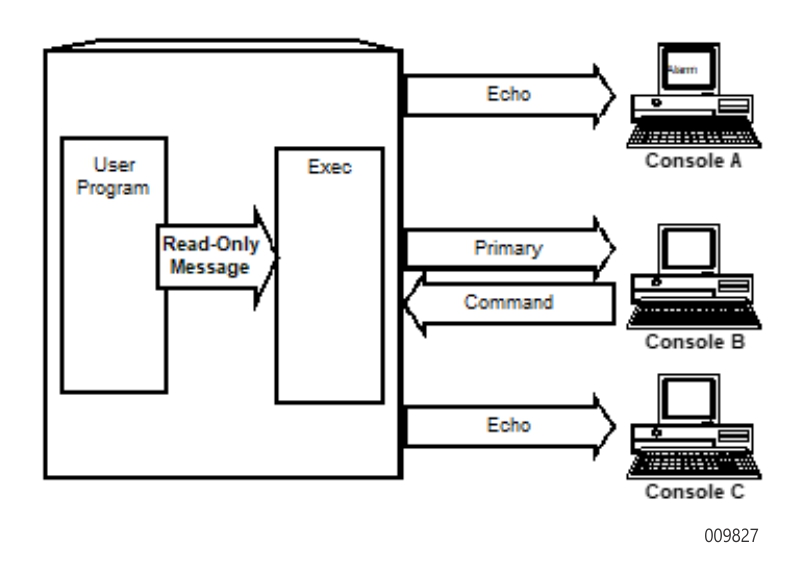Each OS 2200 console message is sent to one or more consoles. One copy, or instance, of the message is routed to a response console to be seen and possibly acted upon. Other instances of the message are sent to display consoles where operators may have an interest in the message but typically do not act on it.
The system makes a distinction between the instance of a message that is sent to a response console and the instances of a message that are sent to display consoles. This permits you to specify in patterns which copy or copies of a message to take action on. The type of instance specified in a pattern must match the instance of a message in order for the message to match the pattern.
Format
INSTANCE [PRIMARY | ECHO | ANY-INSTANCE]
There are two possible instance types:
Primary (default)
There is one primary copy of each message. If the message is in response to an operator keyin, the primary copy is sent to the console that sent the keyin (as indicated by its routing word). Otherwise, the primary copy is sent to the console that is configured as the response console for the message group.
Echo
Echo copies of each message are sent to all the consoles configured to display the message group.
Notes:
The primary copy of a read-and-reply message has a message type of read-and-reply. The echo copy of a read-and-reply message has a message type of read-only.
For continuous display messages, the primary copy goes to the first console that is defined in the hardware configuration by the Site Configuration Management System II (SCMS II). All other consoles receive an echo copy of the message.
The value ANY-INSTANCE matches either instance of the message, primary or echo.
In Figure 2-1, the primary copy of a read-only message, sent by the Exec, matches the pattern on the response console (Console B). The response console sends back a command to the host. The two display consoles (A and C) match the echo instance type of the message. Both consoles sound an alarm and display the message without taking any further action.
Actions need not come from the response console. You can also create a pattern where only the echo copies of a message match and cause actions to occur. Or, a pattern can match all instances of a message if you specify the instance as ANY-INSTANCE.
